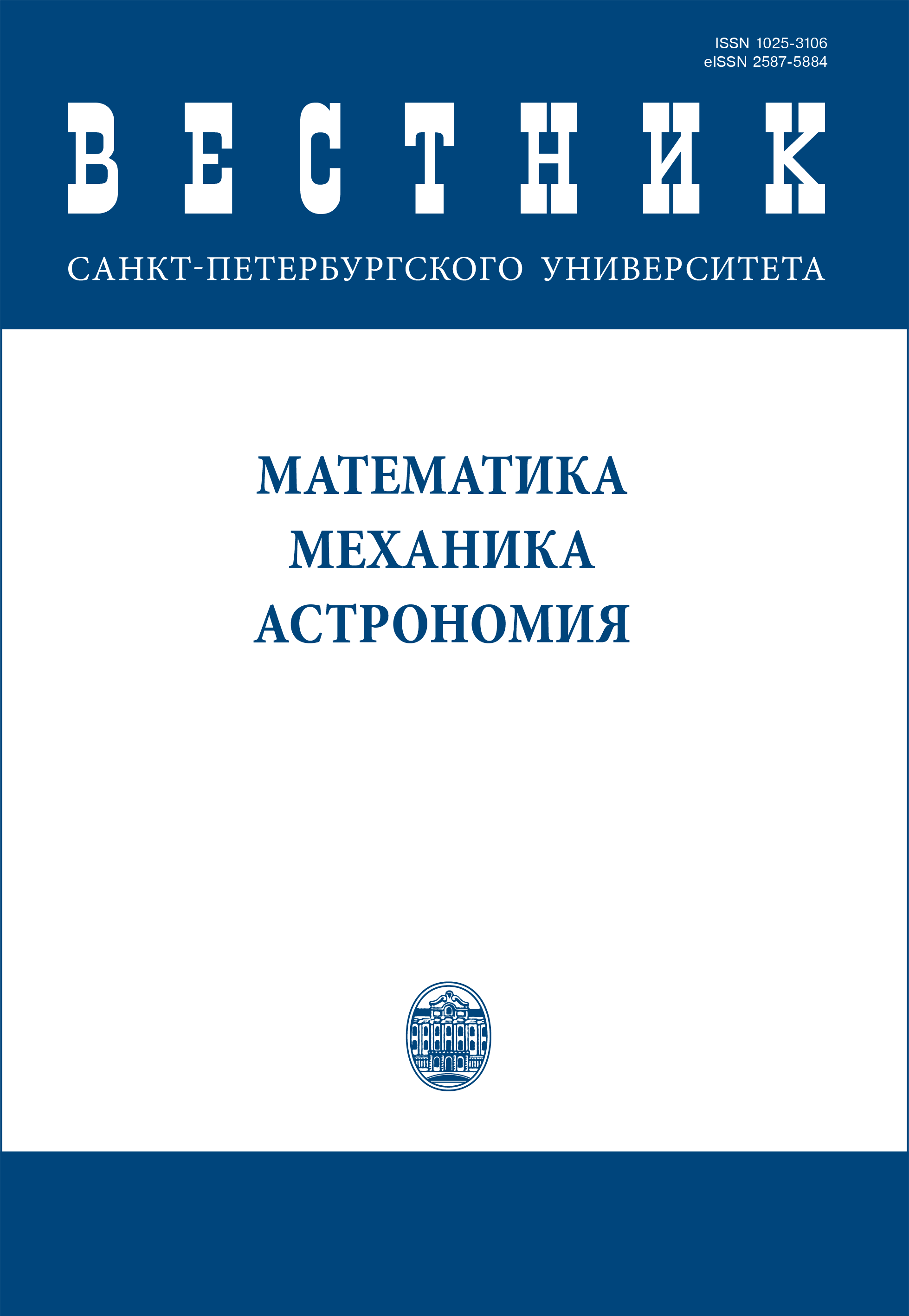Dynamics of a double pendulum with viscous friction in the joints. I. Mathematical model of motion and construction of the regime diagram
DOI:
https://doi.org/10.21638/spbu01.2024.210Abstract
The paper discusses the dynamic behavior of a double mathematical pendulum with identical parameters of links and end loads, which is under the influence of viscous friction in both of its joints with generally different dissipative coefficients. A linear mathematical model of the system motion for small deviations is given, and a characteristic equation containing two dimensionless dissipative parameters is derived. For the case of low damping, approximate analytical expressions are found that make it possible to evaluate and compare with each other the damping factors during the motion of the system on each of the oscillation modes. A diagram of dissipative motion regimes is constructed, which arises when the plane of dimensionless parameters is divided by discriminant curves into regions with a qualitatively different character of the system motion. It is noted that a dissipative internal resonance can take place in the system under consideration, and the conditions for its existence in an analytical form are established, as well as their graphic illustration is also given. This article is the first part of the study of the dynamics of a dissipative double pendulum, the continuation of which will be presented as a separate work “Dynamics of a double pendulum with viscous friction in the joints. II. Dissipative oscillation modes and optimization of damping parameters”.Keywords:
double pendulum, viscous damping, low friction, damping factor, discriminant curve, dissipative regime diagram, dissipative internal resonance
Downloads
References
Литература
References
Downloads
Published
How to Cite
Issue
Section
License
Articles of "Vestnik of Saint Petersburg University. Mathematics. Mechanics. Astronomy" are open access distributed under the terms of the License Agreement with Saint Petersburg State University, which permits to the authors unrestricted distribution and self-archiving free of charge.




